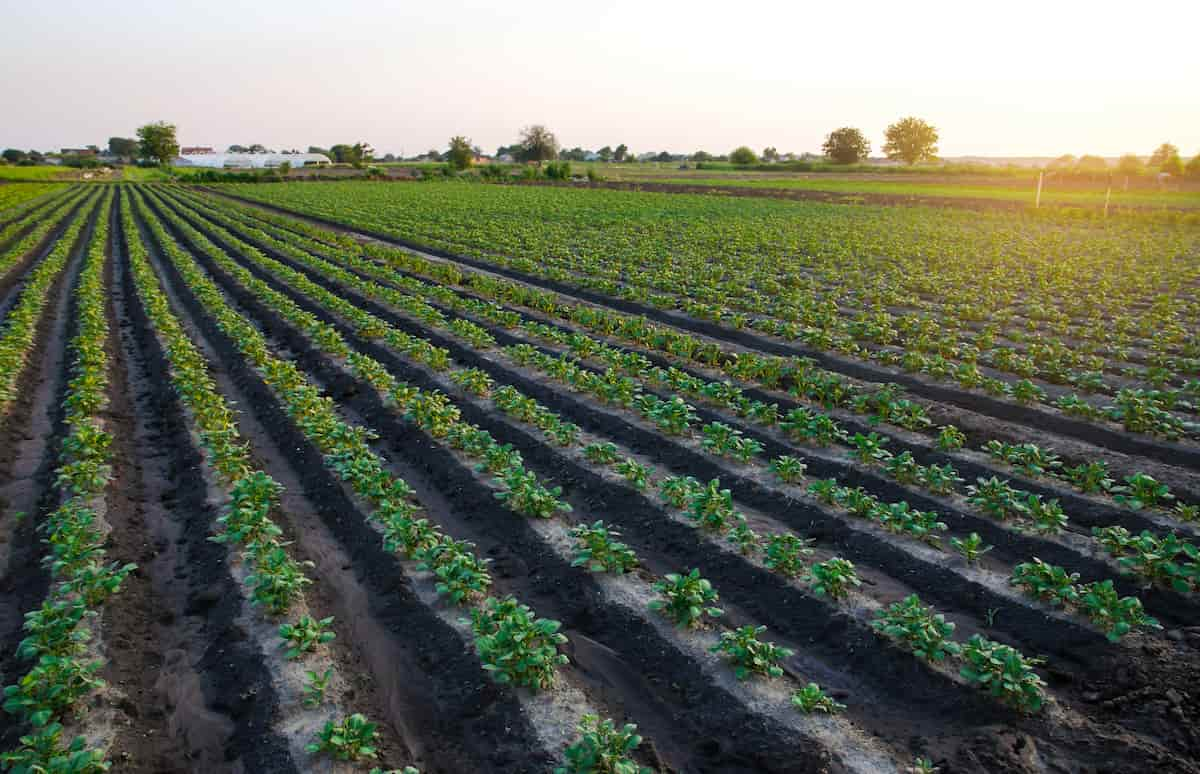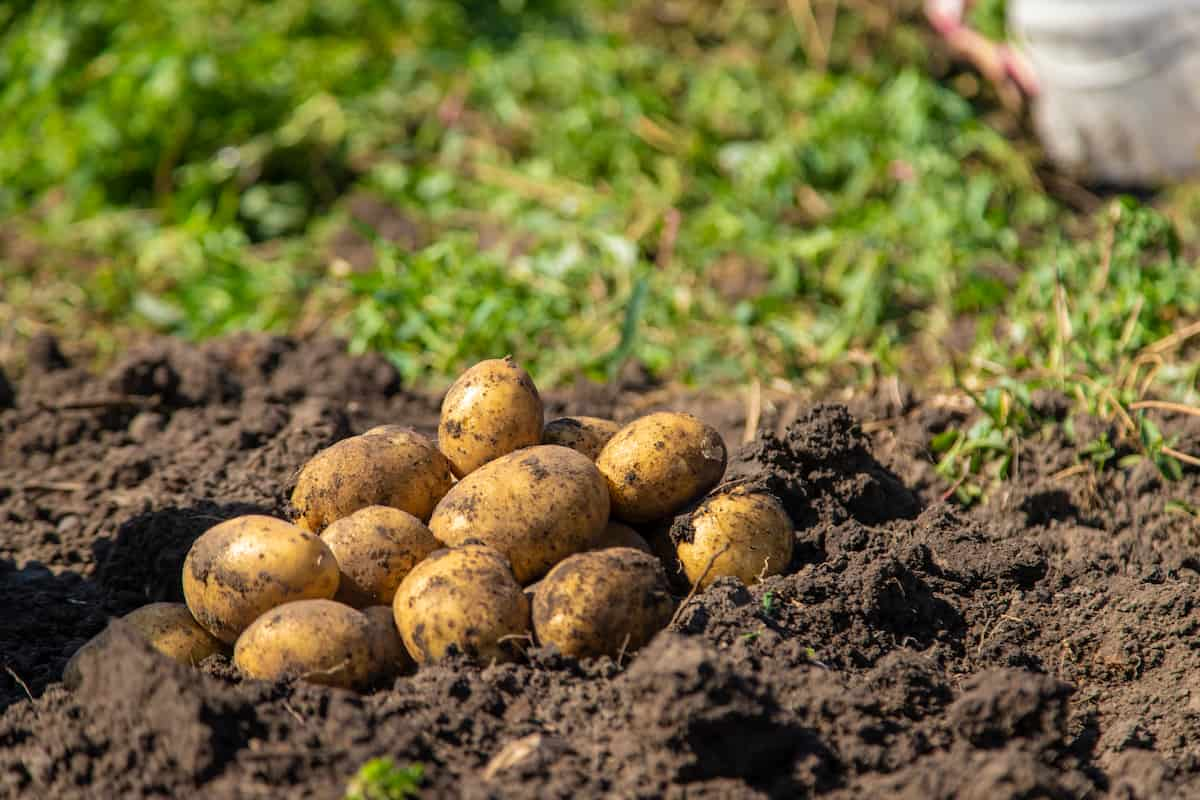Kennebec is a white potato that matures in the medium to late season. It was developed by the USDA and chosen by Presque Isle Station, Maine, in 1941 and is not protected by plant variety rights. Kennebec plants grow quickly and produce high yields, with tubers that maintain good quality in storage.

They are commonly used for both fresh market sales and for producing potato chips. The plants have non-pigmented, thick stems that are prominently angled and large, dark green, broad leaves with slightly pubescent midribs. Tubers are elliptical to oblong with smooth, creamy skin and shallow eyes.
Cultivating Kennebec Potatoes
What are Kennebec Potatoes
Kennebec potatoes are a popular gourmet potato variety with a smooth, fluffy texture and delicious flavor. They have white flesh and thin, brown skin, making them ideal for baking, boiling, frying, or stewing. This midseason variety from Maine typically takes about 90 days to mature and has a high starch content that allows them to store well. While great for home gardeners, Kennebec potatoes are also highly sought-after by commercial chip and french fry producers due to their excellent frying qualities.
Best Tips on How to Plant Kennebec Potatoes
- Choose a spot with full sun and well-draining soil to plant Kennebec potatoes. Dig a trench that’s 6 inches deep, set potato pieces 3-6 inches deep with sprouts pointing up, and buried with a few inches of soil.
- Hill the plants every two weeks by adding soil around the main stem. Water the plants consistently once a week or more during hot weather, and avoid overwatering.
- Fertilize lightly with a balanced fertilizer or organic options like compost, manure, or fish emulsion.
- Harvest new potatoes when they form near the soil surface and full-size potatoes by digging up the entire plant. Companion plants for Kennebec potatoes include peas, onion, lettuce, and nasturtium, which can improve soil nutrients and deter pests.
- Pests affecting Kennebec potatoes include slugs, aphids, beetles, and caterpillars, which can be removed manually or prevented using barriers.
- Diseases affecting Kennebec potatoes include early blight, late blight, and Verticillium wilt, which can be prevented using disease-resistant varieties and avoiding planting in the same spot.
Soil and Temperature Requirements for Kennebec Potatoes
For planting Kennebec potatoes, choose a sunny area in your garden with well-draining soil. This variety can tolerate various soil types but prefers slightly acidic soil with a pH of 5.5-6.5. Before planting Kennebec potatoes, ensure the soil temperature is at least 60 degrees Fahrenheit. Dig holes or a trench about 6 inches deep to plant the potatoes.
Propagating of Kennebec Potatoes
When planting Kennebec potatoes, use whole potatoes rather than seeds. If the potatoes are large, cut them into halves or quarters, ensuring each piece has at least one or two “growth eyes.” This process is known as “cheating” and can help identify which eyes are open for germination.
Seed Rate, Seed Treatment, and Spacing of Kennebec Potatoes
For Kennebec potatoes, the recommended seeding rate is 2 to 2.5 tons per hectare for a tuber diameter of 45-60mm. Plant spacing should be 10-15 inches (25-38cm) within the row and 28 to 36 inches (70-90cm) between rows, resulting in a population of 25,000 to 60,000 per hectare. Late-emerged seed typically requires a higher plant population. There is a need for Seed Tubers Treatment just before planting,
Method of Sowing and Time of Sowing of Kennebec Potatoes
Kennebec seed potatoes should be planted 2-4 weeks before the final spring frost for optimal growth. Planting times vary depending on location, with February being suitable for southern areas and May for colder climates. Kennebec potato seeds are typically planted with automated potato planting machines attached to tractors.
In case you missed it: How to Grow Potatoes in Greenhouse: A Step-by-Step Guide for Seed to Harvest

These machines have multifunction capabilities, plowing the field and planting the seeds in the recommended depth with the proper spacing between seeds and rows. Spring Season is the best time to plant Kennebec potatoes in a well-prepared, sunny location with well-aerated soil that can be cultivated properly.
Weed Control in Kennebec Potatoes
Pendimethalin is a potent herbicide that effectively targets grasses and broadleaved weeds such as Blackjack. Adding Linuron to Pendimethalin enhances Amaranthus and Wild Radish control while providing longer-lasting control of Gallant Solider. Metribuzin has a broad weed control spectrum, but its safety depends on the variety and may not work on Cleavers and Nightshades. It is best to consult with an agronomist before using Metribuzin.
Irrigation in Kennebec Potatoes
To ensure the optimal growth of potato plants, proper watering is essential. Avoid washing away the soil covering the tubers by watering carefully. Inconsistent watering can result in knobby or oddly shaped potatoes, while excessive watering can cause black or hollow centers. Water once or twice a week for best results during the summer months.
Crop Rotation and Intercropping in Kennebec Potatoes
In Asia, potato cultivation often involves intercropping with maize; in Africa, it is common to intercrop with maize and beans. This practice can enhance the equivalent land ratio and increase ground cover. Moreover, when leguminous crops are included in the association, they can deliver nitrogen to other crops, thus improving overall productivity. Relay cropping of potatoes with other crops can also be beneficial in some circumstances.
Fertilizer Management in Kennebec Potatoes
Although Kennebec potatoes don’t need much fertilizer, a light application during the growing season can be beneficial. A balanced fertilizer is recommended for young plants, taking care not to over-fertilize. Organic options such as compost, manure, or fish emulsion are good choices as they can improve soil quality and provide nutrients for healthy potato growth. Follow the manufacturer’s instructions for proper application.
Disease Control in Kennebec Potatoes
Common scab is a potato disease that results in circular or irregular lesions on tubers, ranging in color from tan to dark brown. The type of lesion varies depending on factors such as cultivar, tuber maturity, soil organic matter content, pathogen strain, and environment. Common scab control is possible by maintaining soil pH levels of 5.2 or lower. Early blight affects potato foliage and can lead to dark, sunken circular lesions on tubers. Fusarium dry rot can cause inner light to be dark brown or black dry rot in potato tubers, resulting in tissue collapse and dark recessed areas outside the tuber.
Pest Control in Kennebec Potatoes
Kennebec potatoes are susceptible to several diseases, such as early blight, late blight, and Verticillium wilt, which can cause yellow or brown leaves and tuber rot. Choosing disease-resistant potato varieties and avoiding planting in areas where they have been grown previously can help prevent disease buildup.
Crop rotation with non-related crops can help disrupt disease cycles. Additionally, practicing good garden hygiene by removing any infected plant material and promptly disposing of it can reduce the risk of disease spread. Proper soil drainage, regular watering, and fertilization can help keep Kennebec potatoes healthy and disease-free.
Harvesting of Kennebec Potatoes
Potatoes mature in 80-100 days, and young potatoes can be harvested when swollen. Wait until the vines turn yellow or die to harvest fully ripe potatoes. After harvesting, please keep them in the dark at around 40 degrees and free them from the soil.
The yield of Kennebec Potatoes
A successful potato crop can yield 25 tons per hectare or 10 tons per acre.
In case you missed it: Can You Grow Potatoes from Store-bought Potatoes: Step-by-Step Process

Conclusion
Growing Kennebec potatoes can be a satisfying experience if you follow the proper techniques. Choose disease-resistant varieties, provide adequate water, fertilizer, and sunlight, and maintain good garden hygiene. You can harvest delicious potatoes with consistent care and attention in just a few months.
- Feed Your Flock for Less: Top 10 Tips to Save on Chicken Feed
- Ultimate Guide to Ossabaw Island Hog: Breeding, Raising, Diet, and Care
- Hatching Answers: The Top 10 Reasons Your Chickens Aren’t Laying Eggs
- Eggs and Economics: Breaking Down the Cost of Raising Backyard Chickens
- Defend Your Greens: Proven Methods to Keep Iguanas Out of Your Garden
- Ultimate Guide to Cinnamon Queen Chicken: A Comprehensive Guide for Beginners
- Ultimate Guide to California Tan Chicken: Breeding, Raising, Diet, Egg-Production and Care
- Ultimate Guide to Marsh Daisy Chicken: Breeding, Raising, Diet, and Care
- 10 Types of Chicken Farming Businesses You Can Start for Profits